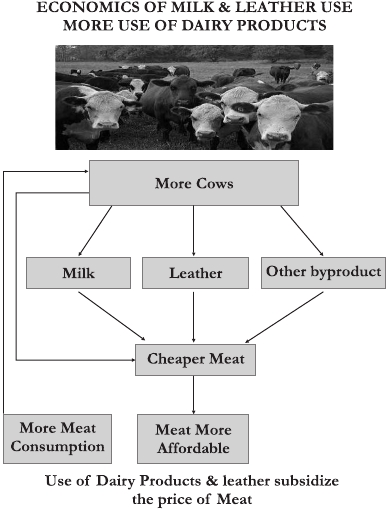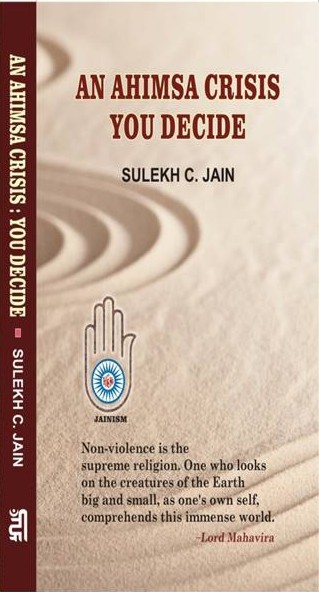Let me again share a few examples to illustrate the varied ways leather contributes to violence against animals.
A few years ago I was in New Delhi, India. There, one of my very distant Jain relatives brought his son (in his early twenties) to meet with me. This young man came and touched my feet (as a sign of respect in Indian customs). I noticed that this boy was wearing a leather jacket. Immediately, I told this young man to remove his leather jacket, hang it outside the house and then come and sit next to me, which he did very politely. Then, I told the boy that there is so much himsa in the production and use of this leather jacket and he should not wear it, as he is directly and indirectly responsible for the killing of an animal. At this, the boy asked “Uncle, how can I be responsible for the killing? The animal was killed for meat [and not for leather] and I am just using leather which was a by-product any way.” Now, it was time for me to give him a lesson in simple economics.
I started with a simple example. I said, “Let us suppose the cow is worth $1,000 and yields 500 kg of meat after slaughtering. Thus, the production cost of meat is $2 per kg. Now if the same cow gives byproducts of, say $400 worth of leather and $100 for bones, urine, and blood, then the net cost for 500kg of meat is only $500 or $1 per kg.
Now the meat becomes that much cheaper and more people will be able to afford meat at $1/kg as opposed to $2 per kg; hence raising and slaughtering a greater number of animals. Since leather significantly subsidizes the price of meat, the killing of more and more animals goes on and the dairy farming industry thrives.”

With this simple example, this young Jain boy understood very clearly his direct role in the killing of animals. Since that time, to the best of my knowledge, he has never worn a leather jacket again. He also became one of my best friends.
Once I was staying at a very holy Jain pilgrim place in India. One morning I woke up early (at five o’clock in the morning) and went to the temple to do the darshan and some meditation in front of the Jain pratimas. When I got there, I saw a group of Jains already doing their arti.
I noticed that one of the persons in the group was wearing a leather jacket while doing Arti. At the entrance to the temple gate, it was clearly written that nothing containing leather (camera cases, belts, purses, wallets, and jackets) is allowed within the Jain temple premises. Noticing this, I immediately went to the gate keeper/security guard and asked “How come this person is doing arti with a leather jacket on?”
The security guard replied, “Sir, we try to stop many people like this but they argue and push us aside. What can we do?”
You can imagine how I felt at that moment. What happened to Ahimsa in the Jain community?
 Dr. Sulekh Chand Jain
Dr. Sulekh Chand Jain
